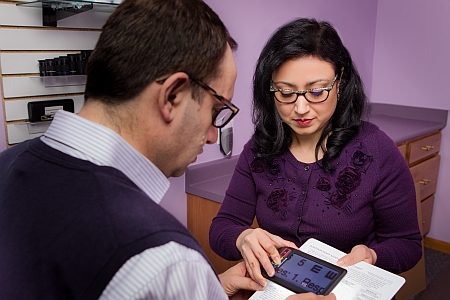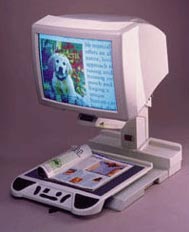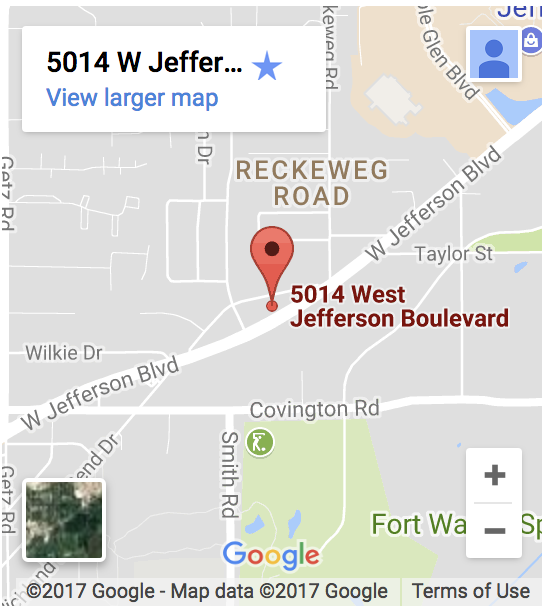 Low vision is considered significant vision impairment that usually results from serious eye disease or an injury. The vision loss, which is characterized by either reduced visual acuity (to 20/70 or worse) or reduced field of view, can’t be fully corrected with glasses, contact lenses, medication or surgery.
Low vision is considered significant vision impairment that usually results from serious eye disease or an injury. The vision loss, which is characterized by either reduced visual acuity (to 20/70 or worse) or reduced field of view, can’t be fully corrected with glasses, contact lenses, medication or surgery.
Low vision can affect both children and adults, but is more common in the elderly, who are at greater risk of eye diseases such as glaucoma, macular degeneration and cataracts, which are some of the most common causes of the condition.
Patients with low vision may have complete central or peripheral vision loss, blurry vision, poor low-light vision, loss of light sensitivity and/or loss of contrast, making daily activities such as writing, watching TV, driving or reading difficult or impossible. Since the vision loss can’t be corrected, low vision requires significant adjustments to daily life and the help of techniques and specialized low vision aids to help maximize the remaining vision to increase independence and quality of life.
What are causes of low vision?
- Eye diseases such as glaucoma, macular degeneration, cataracts, diabetic retinopathy, and retinitis pigmentosa
- Eye injury or brain injury
- Heredity
How does low vision affect eyesight?
Low vision is partial vision loss which varies from person to person. Depending on the severity and type of vision impairment, the patient may have some useful vision. Typically the impairment includes a significant reduction in visual acuity to worse than 20/70, hazy, blurred vision, blind spots or significant visual field loss and tunnel vision. Sometimes the extent of vision loss is considered to be legal blindness (20/200 or less visual acuity in the better eye) or almost total blindness.
How does low vision affect daily life?
With significant vision loss it can become challenging to complete common daily tasks including reading, writing, cooking and housework, watching television, driving or even recognizing people.
When low vision is diagnosed it can come as a shock. Initially, it is an adjustment to learn how to function with impaired vision but the good news is there are numerous resources and products available to assist. Because low vision often results in one’s inability to work, function independently, drive and resume normal life, many patients feel isolated and depressed.
Visual Rehabilitation and Visual Aids
Low vision means that a minimal amount of sight remains intact. There are millions of people who suffer from the condition and manage to function with the remaining vision available to them through the use of visual rehabilitation or visual aids.
What are visual aids?
These are devices that help people with low vision function by maximizing their remaining eyesight. This often involves the use of magnifiers (handheld, mounted or stand-alone), telescopes and other tools to enlarge the images of objects to make them more visible. Some visual aids reduce glare and enhance contrast which makes it easier to see. Other low vision aids act as guides to help the person focus on non-visual cues, such as sound or feel. Finding the right visual aid is a matter of consulting with a professional and experimenting with what works for you and your daily needs.
Low Vision Rehab
Adjustment to any vision loss is difficult. It takes self-acceptance, determination, support of family and friends, and learning new techniques to fully utilize any remaining vision. The goal of the Low Vision Services is to enable people with low vision to improve their ability to use their remaining vision so they can be independent and better able to meet the demands of everyday living.
Vision Rehabilitation Plan
 After completing the low vision examination, we will design a vision rehabilitation plan. The plan will include the goals to which the team and you have agreed; the devices that best fit those goals and your lifestyle; the training and support that will be the most helpful; and referral to supporting services and agencies.
After completing the low vision examination, we will design a vision rehabilitation plan. The plan will include the goals to which the team and you have agreed; the devices that best fit those goals and your lifestyle; the training and support that will be the most helpful; and referral to supporting services and agencies.
At subsequent visits, the devices will be dispensed and you will be trained on their proper use. Using the devices for independent living activities such as cooking, shopping, and reading mail, will also be taught. Computer technology and electronic reading devices will be evaluated if you have specific goals that can be met by them.
How to make life with low vision easier
- Ensure that you have adequate lighting in your home. This may require some trial and error with different lights and voltages to determine what works best for you.
- Use a magnifier. There is a vast selection of magnifiers available, ranging from hand-held to stand magnifiers. Binoculars and spectacle mounted magnifiers are also an option.
- Your optometrist or low vision specialist can recommend specialized lens tints for certain conditions such as retinitis pigmentosa or cataracts, which enhance vision or reduce light sensitivity.
- Use large print books for reading. Alternatively, try digital recordings or mp3’s.
- Make use of high contrast for writing. Try writing in large letters with a broad black pen on a white piece of paper or board.
- Adding a high-contrast stripe on steps (bright color on dark staircase, or black stripe on light stairs) can help prevent falls in people with low vision, and may enable them to remain independent in their home.
- Find out by researching what other technology is available to help make your life simpler.
If you or a loved one has low vision, don’t despair. Consult with our eye doctor about the best course of action to take to simplify life with low vision.
The Benefit to You
You can improve your remaining vision so that you can live as independently as possible, and have a productive and happy life.



Closed daily from 2:30pm to 3:15pm